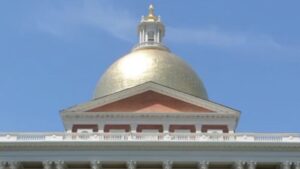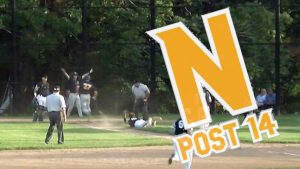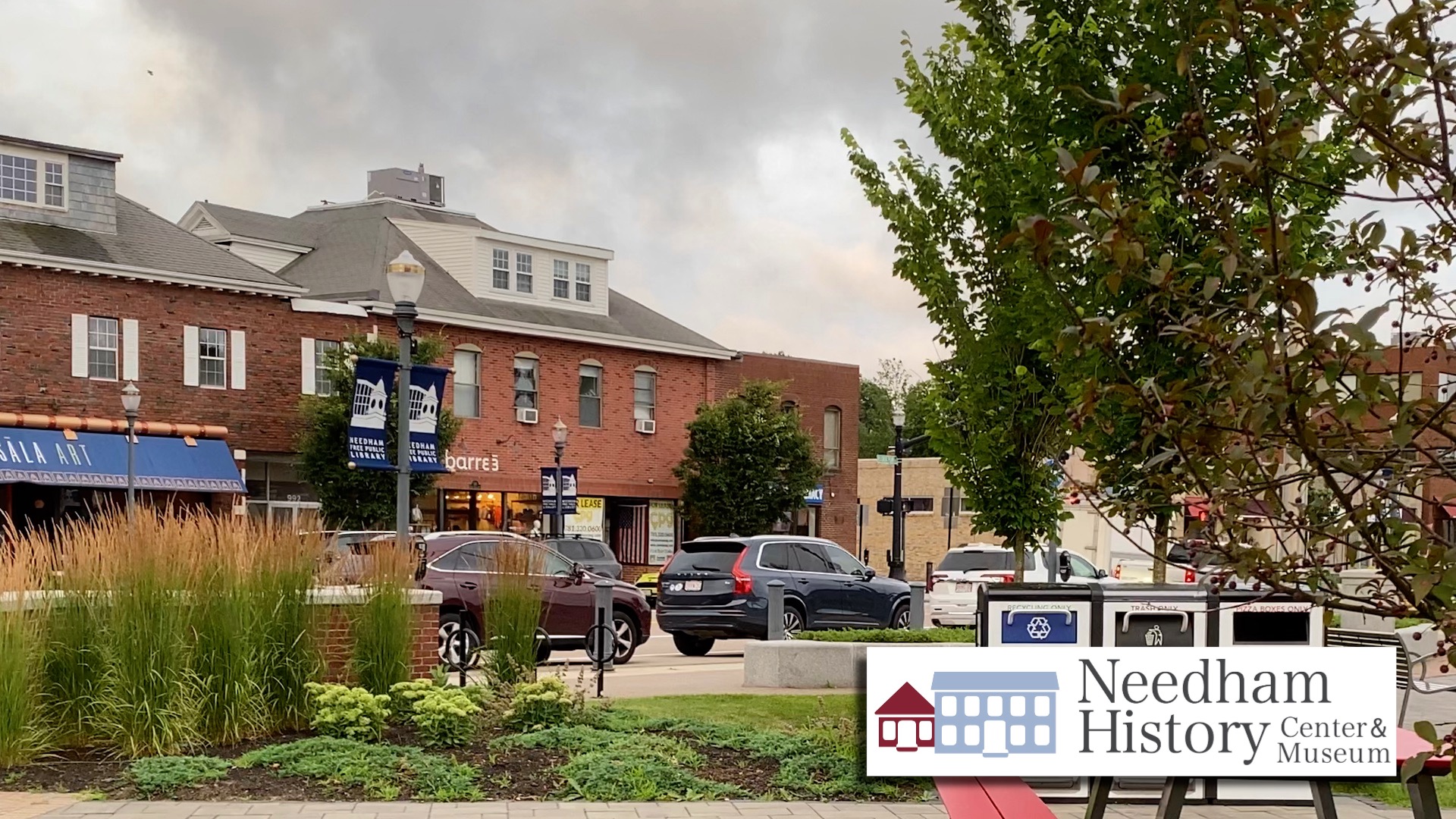
Needham History: The Busy Corner Store
“A corner that has been – literally – at the center of Needham for nearly 170 years.”
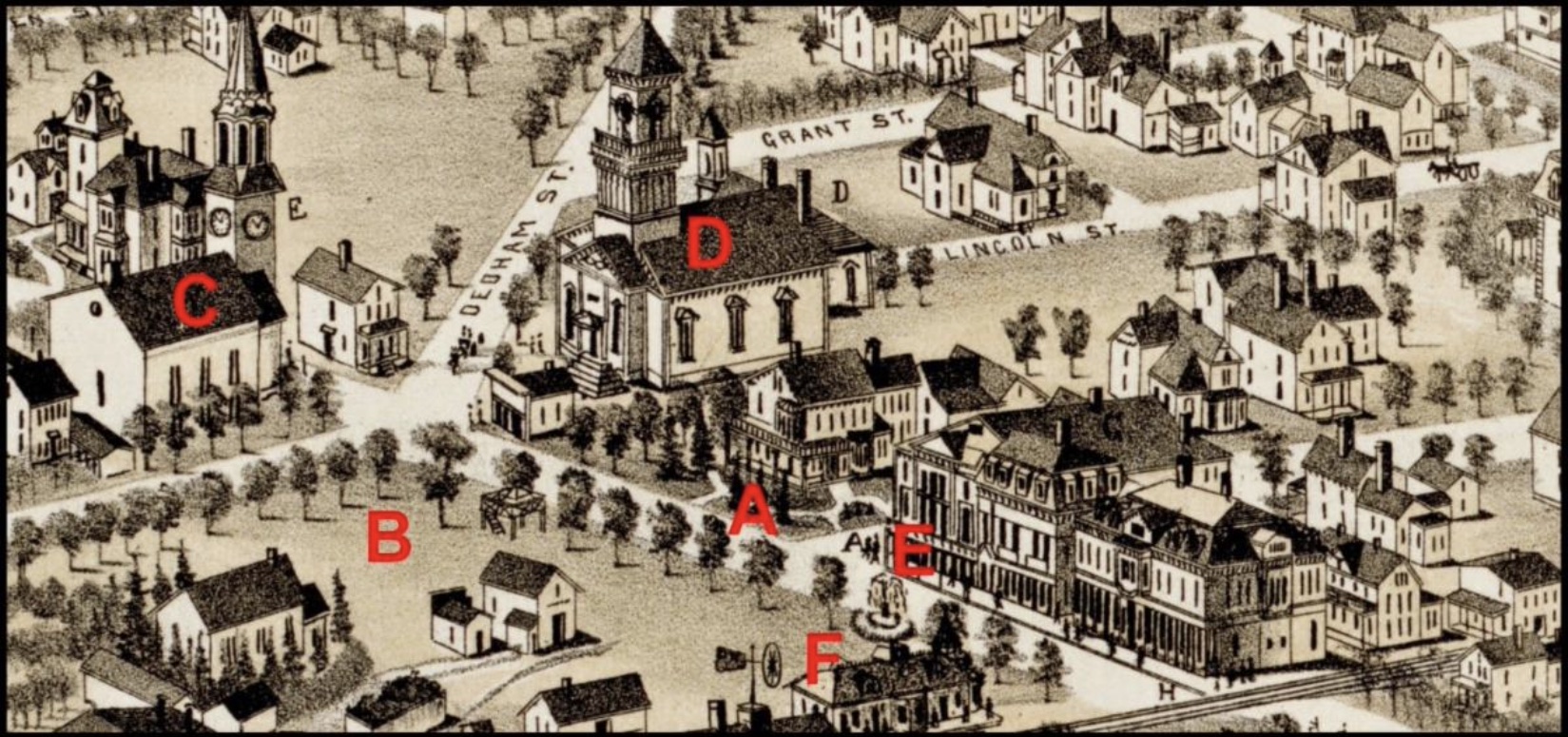
The Busy Corner Store
It is the busiest corner in town, and arguably the best recognized. To long-time Needhamites it is still (in our memories) anchored by the Crest on one side and Harvey’s on the other. But in real life, it is now the site of Needham Center Fine Wines and the new Union Pharmacy.
Union Pharmacy is the current occupant of a corner that has been – literally – at the center of Needham for nearly 170 years.
The advent of the train line through the Great Plain in 1853 brought rapid changes to Needham. The railroad company was denied permission to cross into the original town center at Nehoiden Street and Central Avenue, so it was forced to divert south into the Great Plain. Although the Great Plain did not become the “real” downtown until about the 1870s, the Plain was already seeing significant transformation as early as 1854, as the train increasingly attracted new residents and merchants. The first business block and Post Office – Village Hall – was built right beside the tracks by 1854. The surrounding property became valuable overnight, as local businessmen bought it up to sell as house lots. Before the railroad, this land was open and had little use, and mostly served as pasture. Asa Kingsbury’s 1836 map of Needham shows just five houses in the Great Plain between the big bend at Beaufort Avenue and the intersection of Nehoiden Street. The 1852 map shows two houses and a school. By 1856, just a couple of years after the train, there were nine homes, the train station, Village Hall (with its meeting rooms, general store and post office), and the Baptist Church. And an active market in real estate.
One of those new homes, on the southeast corner of Great Plain Avenue and Chestnut Street, was the home of Stephen F. Harvey. Harvey was also the owner of Village Hall, and other properties in the Great Plain. Harvey bought the land from Edmond Pearson of Maine in 1854, and built himself a rather attractive house. In 1868, the property was sold to Capt. Alfred Gardner of Boston, and in 1876 it was sold to Edmund B. Fowler.
Edmund Fowler, a maker of yeast, moved to Needham in 1874 from Boston. He opened a market in a building on the other side of Chestnut Street, and then moved it into the main retail block at Village Hall. Two years later, he bought the corner house from Gardner and moved in.
Top: Mr and Mrs Edmund Fowler in front of their house on the corner of Great Plain Avenue and Chestnut Street, circa 1885. Below: Fowler’s grocery store, built on the former corner site of his house, circa 1892.
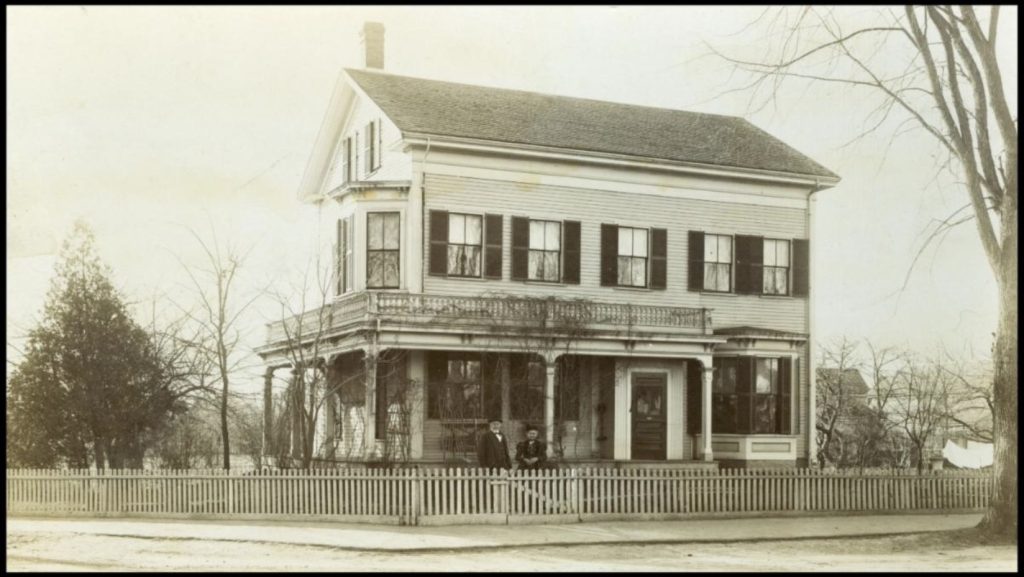
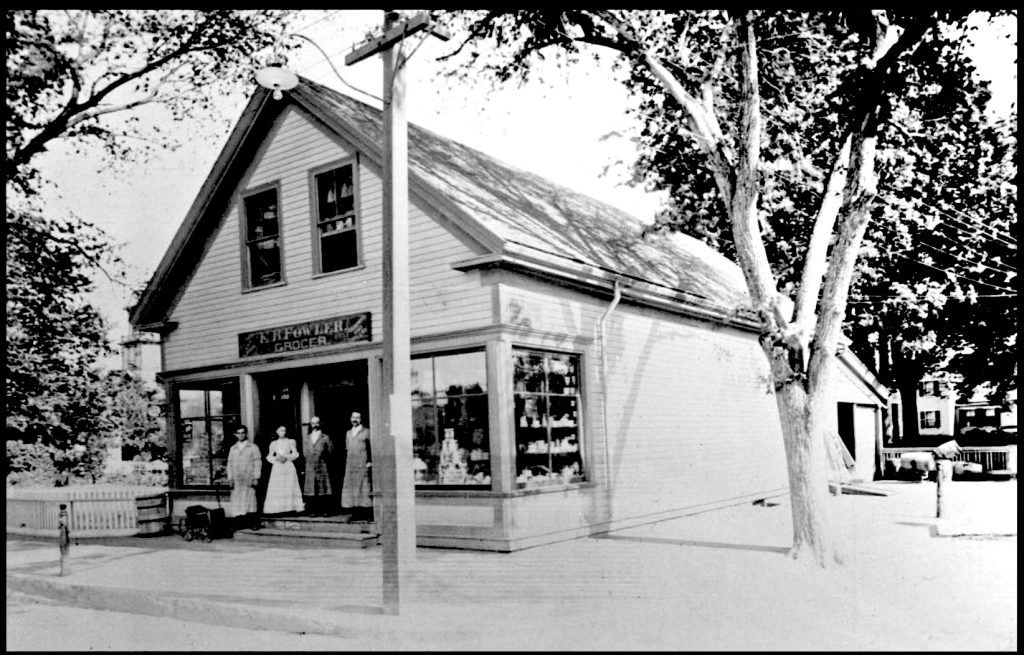
Fowler’s business was clearly successful, because he began to acquire property. In 1891, he moved his house to the corner of Great Plain and Dedham Avenues (now the Farmhouse site), and in 1892 built a new market for himself on the corner where his house had been. In 1893, he acquired the rest of the lots between his store and his house, and built two additional retail blocks (known as ‘Fowler 2’ and ‘Fowler 3’) as lease properties. Once these were done, he moved his own store into one of the new blocks and leased his corner site to TJ Crossman’s Market, which had been for many years on the southwest corner, across Chestnut Street.
After he built his first store on the corner, Fowler bought the lots between the store and his house and built two more retail blocks, known as Fowler 2 (center) and Fowler 3 (left). At the time of this photo (circa 1910), Crossman’s occupied the corner.
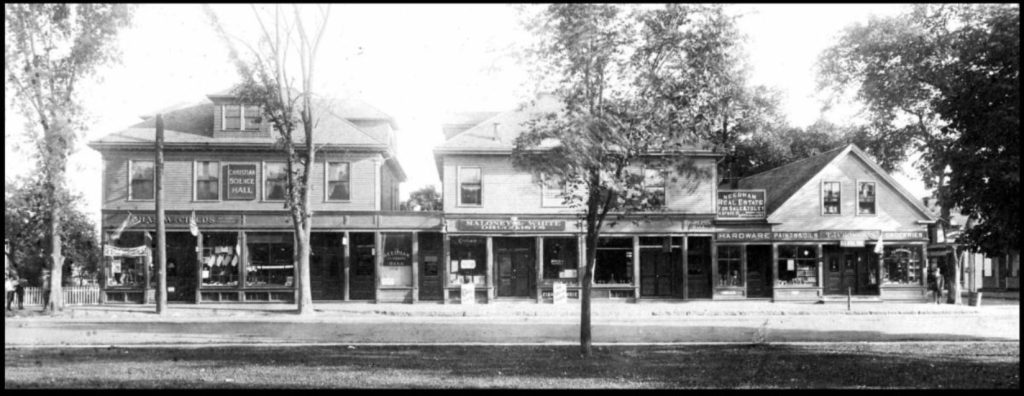
The move into Fowler’s store gave Crossman more space, and so his business grew. The corner came to be known as “Crossman’s Corner.” In 1928, Crossman took down Fowler’s old building and built a larger one for his market, adding a second floor. Crossman’s Market occupied that corner until 1959, ultimately run by three generations of Crossmans.
In 1959, Pat and Bud Roche’s grocery business moved into the corner store. The Roche brothers had a store in Roslindale, but its success convinced them to expand into nearby towns. The Needham site was their second store. However, by 1965 they needed more space, so they purchased a larger site on Chestnut Street.
The next occupant was Harvey Katz, who opened his hardware store on that corner. The 1928 building is gone now, however. In May 1977, sparks from a fire at Locke’s Lumber on Chestnut Street ignited the roof of Harvey’s and fire gutted the building. It was replaced by the larger brick store that we see today.
Most of the original downtown buildings are gone now, replaced by newer structures. Unexpectedly, although the corner store has been rebuilt, Fowler’s two other retail blocks remain – now well-hidden behind the brick facades of Masala Art and Barre3. But from Stephen Harvey to Union Pharmacy – Fowler’s Corner/Crossman’s Corner/Harvey’s Corner continues to anchor our busy downtown.
In the 1950s, Crossmans’s Market still occupied the corner store, in the larger building he built in 1928. The adjacent two buildings (from Brigham’s to Rimmele’s) occupy the old Fowler 2 and Fowler 3. Still standing, the buildings now house Barre3, Masala Art and CVS.
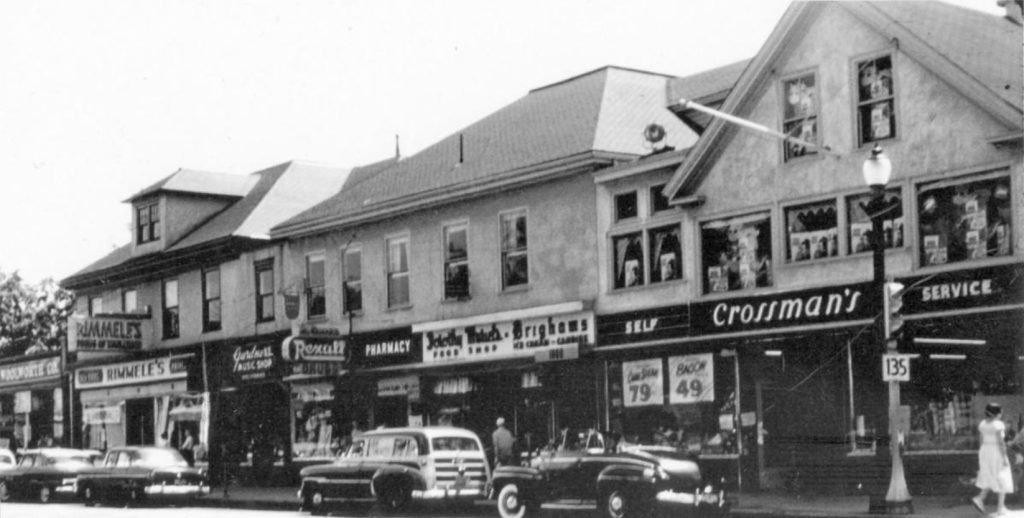
 |
Gloria Polizzotti Greis is the Executive Director of the Needham History Center & Museum. For more information, please see their website at www.needhamhistory.org. |
